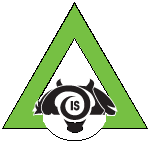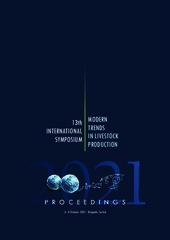Приказ основних података о документу
Fusarium spp. and deoxynivalenol contamination of ryegrass seeds
| dc.creator | Krnjaja, Vesna | |
| dc.creator | Mandić, Violeta | |
| dc.creator | Bijelić, Zorica | |
| dc.creator | Stanković, Slavica | |
| dc.creator | Nikolić, Milica | |
| dc.creator | Vasić, Tanja | |
| dc.creator | Delić, Nikola | |
| dc.date.accessioned | 2021-10-14T10:56:37Z | |
| dc.date.available | 2021-10-14T10:56:37Z | |
| dc.date.issued | 2021 | |
| dc.identifier.isbn | 978-86-82431-77-0 | |
| dc.identifier.uri | http://r.istocar.bg.ac.rs/handle/123456789/738 | |
| dc.description.abstract | The aim of this study was to evaluate fungal infection, with a special focus on Fusarium spp. and deoxynivalenol (DON) presence, as a participant in Fusarium head blight (FHB) pathogenesis in two cultivars of Italian ryegrass K-13 and K-29. A total of 24 seed samples were collected during harvest in 2019. By mycological analyses, Acremonium spp., Alternaria spp., Fusarium spp. and non-sporulating species (Mycelia sterilia) were isolated on the seeds of both cultivars of Italian ryegrass. Among Fusarium spp., four species, F. graminearum, F. poae, F. proliferatum and F. subglutinans were identified in cultivar K-13 and three species, F. graminearum, F. poae and F. subglutinans, in cultivar K-29. F. graminearum and F. poae were identified as FHB pathogens, of which F. graminearum was dominant in both cultivars with 20.5% (cultivar K-13) and 32% (cultivar K-29) compared to F. poae which was present in both cultivars with a frequency of 0.5%. The frequency of DON positive samples was 100%. A statistically significant difference in DON level was found between the two tested cultivars, with a higher DON level in cultivar K-29 (5334.33 μg kg–1 ) compared to cultivar K-13 (4738.58 μg kg–1 ). The obtained results indicate that two Fusarium species, F. graminearum and F. poae, were FHB pathogens, with F. graminearum as the predominant species in both cultivars of Italian ryegrass. High DON levels (>3000 μg kg–1 ) in the tested seed of Italian ryegrass indicate on potentially significant participation of DON in FHB pathogenesis, as well as a potential risk for the quality seed production, feed safety and the food chain in general. In Serbia, this is the first report about Fusarium infection and DON presence in ryegrass seed. | sr |
| dc.language.iso | en | sr |
| dc.relation | info:eu-repo/grantAgreement/MESTD/inst-2020/200022/RS// | sr |
| dc.rights | openAccess | sr |
| dc.rights.uri | https://creativecommons.org/licenses/by/4.0/ | |
| dc.source | Proceedings of the 13th International Symposium "Modern Trends in Livestock Production", 6 - 8 October 2021, Belgrade, Serbia, 622-631 | sr |
| dc.subject | Fusarium spp. | sr |
| dc.subject | deoxynivalenol | sr |
| dc.subject | Italian ryegrass | sr |
| dc.title | Fusarium spp. and deoxynivalenol contamination of ryegrass seeds | sr |
| dc.type | conferenceObject | sr |
| dc.rights.license | BY | sr |
| dcterms.abstract | Бијелић, Зорица; Крњаја, Весна; Делић, Никола; Васић, Тања; Николић, Милица; Станковић, Славица; Мандић, Виолета; | |
| dc.citation.spage | 622 | |
| dc.citation.epage | 631 | |
| dc.identifier.rcub | https://hdl.handle.net/21.15107/rcub_ristocar_738 | |
| dc.identifier.fulltext | http://r.istocar.bg.ac.rs/bitstream/id/3892/bitstream_3892.pdf | |
| dc.type.version | publishedVersion | sr |


